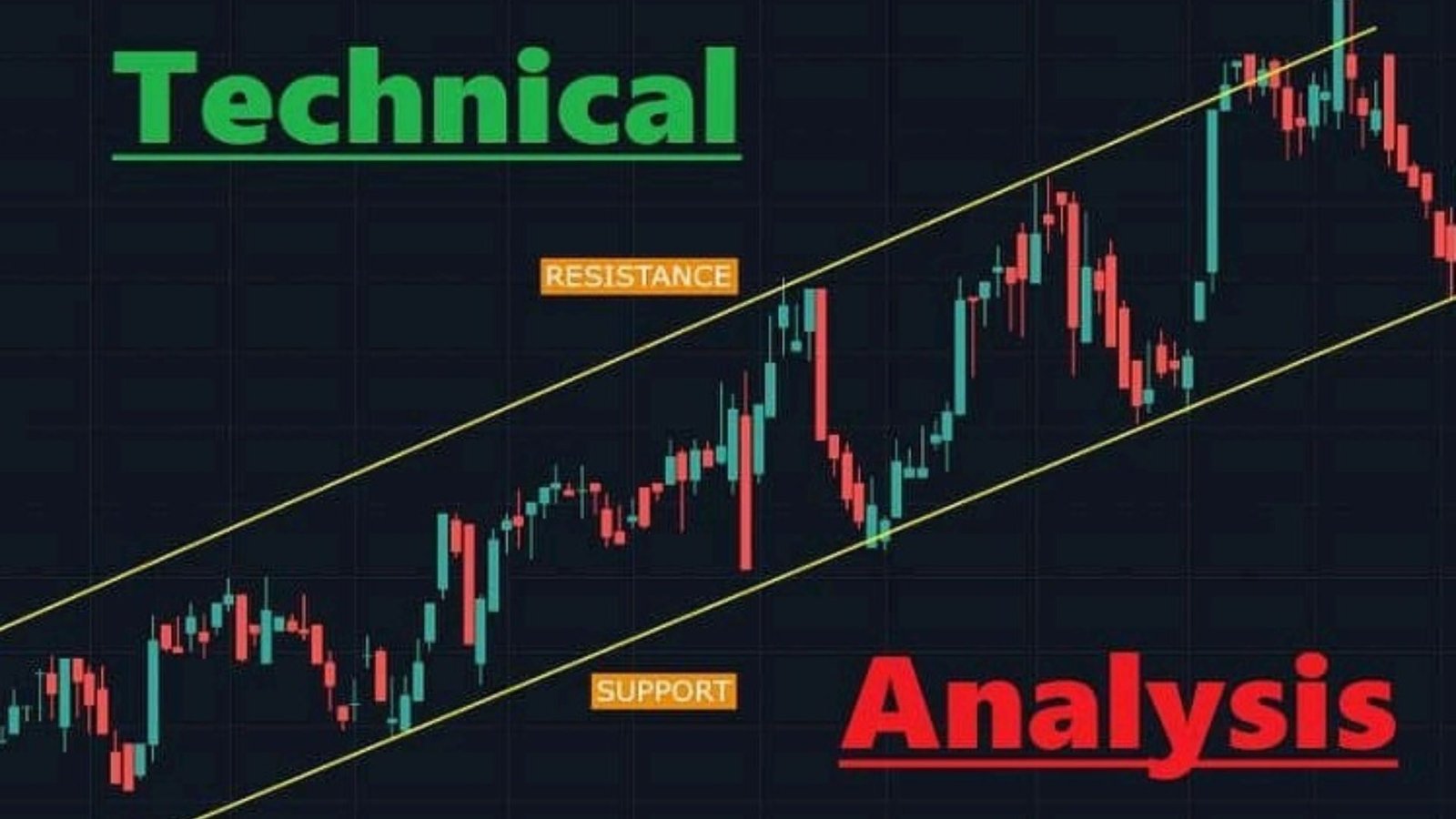The Crypto Crash Alert has sent shockwaves through the digital asset community as Bitcoin, Ethereum, and Solana experience significant declines once again. Investors watching their portfolios shrink are desperately seeking answers about what’s driving this latest downturn in the cryptocurrency landscape. The Bitcoin, Ethereum Solana drops have reignited concerns about market stability and the future of digital currencies.
As major cryptocurrencies tumble, both seasoned traders and newcomers are questioning whether this represents a temporary correction or signals deeper problems within the blockchain ecosystem. The root causes behind this Crypto Crash Alert are essential for anyone holding digital assets or considering entering the space. Let’s dive into the latest developments affecting Bitcoin, Ethereum, Solana, and the broader cryptocurrency market.
What’s Causing the Latest Crypto Market Drop Today?
Regulatory Pressure Intensifies Globally
The Crypto Crash Alert stems primarily from mounting regulatory pressures across multiple jurisdictions. Government agencies worldwide have ramped up scrutiny of digital asset operations, creating uncertainty that directly impacts investor confidence. Recent enforcement actions against major crypto exchanges have triggered widespread panic selling.
The Securities and Exchange Commission (SEC) has intensified its crackdown on unregistered securities offerings within the cryptocurrency space. This regulatory uncertainty has created a chilling effect, causing institutional investors to reassess their positions in Bitcoin, Ethereum, and Solana. When large holders begin liquidating positions, the resulting market volatility cascades across all digital assets.
European regulators have also introduced stricter compliance requirements under the Markets in Crypto-Assets (MiCA) regulation. These new rules demand enhanced transparency and consumer protection measures that many platforms struggle to implement quickly. The compliance costs and operational complexities have forced several smaller exchanges to reconsider their business models entirely.
Macroeconomic Headwinds Impact Digital Assets
The Bitcoin, Ethereum Solana drops cannot be separated from broader economic conditions affecting risk assets globally. Central banks maintaining higher interest rates for longer periods have made traditional fixed-income investments more attractive compared to speculative assets like cryptocurrencies. This shift in capital allocation has drained liquidity from the crypto market.
Inflation concerns persist despite some cooling in consumer prices, prompting investors to seek safer havens for their capital. The strong U.S. dollar has historically correlated with weakness in Bitcoin and other digital currencies, as most crypto trading pairs are denominated in dollars. When the dollar strengthens, crypto assets typically face downward pressure.
Recession fears have also contributed to the crypto market drop today, with investors reducing exposure to volatile assets in favour of cash and government bonds. The technology sector, closely correlated with cryptocurrency performance, has experienced similar sell-offs as growth stocks face pressure from elevated borrowing costs.
Bitcoin’s Steep Decline: An Analysis of the Leading Cryptocurrency
Price Action and Technical Breakdown

Bitcoin has fallen below critical support levels that technical analysts consider essential for maintaining bullish momentum. The leading cryptocurrency dropped beneath the psychologically important $60,000 threshold, triggering automated stop-loss orders that accelerated the decline. This technical breakdown has created a bearish sentiment that feeds further selling pressure.
Trading volumes have surged during the Bitcoin price drop, indicating genuine distribution rather than mere profit-taking. Large wallet addresses, often associated with institutional investors, have shown net outflows, suggesting a coordinated exit from positions. When “whales” sell, the market typically follows their lead, amplifying downward movements.
The Bitcoin Fear and Greed Index has plunged into “extreme fear” territory, reflecting the panic gripping market participants. Historically, such readings have preceded either capitulation bottoms or continued declines depending on fundamental catalysts. The current crypto market environment lacks the positive catalysts needed to reverse sentiment quickly.
Mining Economics Under Pressure
Bitcoin miners are facing profitability challenges as energy costs remain elevated while the Bitcoin price declines. The mining difficulty adjustment hasn’t provided sufficient relief, forcing smaller operations to shut down rigs or operate at a loss. This mining capitulation often precedes bottoming processes, but can also indicate extended bearish periods.
Hash rate fluctuations reveal stress within the mining community, with some pools reporting decreased participation. When miners who must sell Bitcoin to cover operational expenses flood the market with supply, additional downward pressure results. The upcoming halving event, typically bullish, seems priced in already, offering little support during this crypto downturn.
Ethereum’s Challenges Beyond Market Sentiment
Network Activity and Gas Fees Signal Weakness
Ethereum faces unique challenges beyond general market volatility, with network activity metrics showing concerning trends. Daily active addresses have declined compared to peak periods, suggesting reduced user engagement with decentralised applications (dApps). When fewer users interact with the Ethereum network, the fundamental case for ETH appreciation weakens.
Gas fees have fallen to multi-year lows, which some interpret positively but others view as evidence of diminished demand. While affordable transactions benefit users, they also indicate less competition for block space—a potential red flag for network growth. The Ethereum ecosystem must balance accessibility with demonstrable utility and adoption.
Layer-2 scaling solutions, while technologically impressive, have fragmented liquidity and user attention across multiple platforms. This fragmentation may be limiting Ethereum mainnet activity, impacting ETH demand dynamics. As value and transactions migrate to Layer-2s, questions arise about Ethereum’s long-term tokenomics and value accrual mechanisms.
Staking Concerns and Unlock Events
The Ethereum staking landscape faces pressure from upcoming unlock events that could introduce significant selling pressure. As locked ETH becomes accessible to holders, concerns mount about how much will immediately hit exchanges for liquidation. These supply dynamics compound the existing bearish sentiment surrounding the crypto market.
Staking yields have compressed as more ETH enters staking contracts, reducing the income incentive for validators. When staking returns fall below certain thresholds, some participants may choose to exit positions, particularly during periods of price weakness. This potential unstaking wave represents an overhang on Ethereum price recovery prospects.
Solana’s Volatility Continues Amid Technical Issues
Network Outages Erode Confidence
Solana has experienced the crypto market drop today more acutely than some peers, partly due to lingering concerns about network reliability. Previous outages have left some investors questioning whether Solana can achieve the stability required for institutional adoption. When a blockchain suffers downtime, confidence in its infrastructure inevitably suffers.
The Solana network has made significant improvements to address reliability issues, but the reputation damage persists in investor consciousness. Competing blockchains have capitalised on these concerns, positioning themselves as more dependable alternatives. This competitive pressure limits Solana’s ability to maintain market share during turbulent periods.
Developer activity remains robust on Solana, with numerous projects building on the platform despite challenges. However, the disconnect between developer enthusiasm and price performance highlights how market sentiment can override fundamental developments. Until the network demonstrates consistent uptime during high-stress periods, concerns will persist.
Token Unlocks Creating Supply Pressure
 Solana faces substantial token unlock schedules that introduce continuous selling pressure into the market. Early investors and team members receiving vested tokens often liquidate portions to realise profits, regardless of market conditions. These predictable supply increases make price recovery more difficult during already bearish environments.
Solana faces substantial token unlock schedules that introduce continuous selling pressure into the market. Early investors and team members receiving vested tokens often liquidate portions to realise profits, regardless of market conditions. These predictable supply increases make price recovery more difficult during already bearish environments.
The SOL token economics include ongoing inflation from staking rewards and validator incentives, adding to circulation. While inflation serves important network security purposes, it requires continuous buying pressure to maintain prices. During periods of declining interest in crypto assets, this inflationary pressure weighs heavily on valuations.
Broader Crypto Market Implications
Altcoin Bloodbath Follows Major Tokens
The crypto market drop today extends far beyond Bitcoin, Ethereum, and Solana, with smaller altcoins experiencing even more severe declines. Risk-off sentiment typically hits lower-capitalisation tokens hardest as investors flee to perceived quality. Many altcoins have lost 80-90% of their value from previous all-time highs during this extended bear market.
Liquidity has evaporated from many trading pairs, creating wider bid-ask spreads and making exits more costly for holders. Decentralised finance (DeFi) protocols have seen total value locked (TVL) decline substantially, reducing the collateral backing many tokens. This liquidity crisis creates feedback loops where falling prices beget more selling.
Cryptocurrency projects with weak fundamentals face existential threats during prolonged downturns. Teams lacking adequate runway may be forced to shut down operations or execute desperate fundraising that dilutes token holders. The crypto winter environment separates viable long-term projects from those built on hype alone.
Exchange Outflows Signal Long-Term Holder Capitulation
Bitcoin and Ethereum exchange outflows, typically interpreted as bullish signals, have reversed with significant inflows suggesting capitulation. When long-term holders who weathered previous corrections finally sell, it often marks deeper phases of bear markets. These holders represent the final line of support before more severe capitulation events.
Crypto exchange reserves have increased across major platforms, indicating growing selling pressure and declining confidence. Historical patterns suggest that extreme exchange inflows can precede bottoming processes, but timing remains uncertain. The cryptocurrency market requires sustained accumulation to reverse these troubling trends.
What This Means for Crypto Investors
Risk Management Strategies During Downturns
Investors navigating the crypto market drop today must prioritise capital preservation over opportunity seeking. Implementing strict stop-losses and position sizing rules prevents catastrophic portfolio damage during volatile periods. Many traders who survived previous crypto crashes attribute their survival to disciplined risk management rather than market timing.
Dollar-cost averaging (DCA) strategies may appeal to long-term believers in cryptocurrency adoption, allowing accumulation during depressed prices without timing the exact bottom. However, DCA requires conviction and capital reserves to maintain through extended downturns. Some investors prefer waiting for clear trend reversals before committing fresh capital.
Diversification beyond crypto assets into uncorrelated investments provides portfolio stability that pure cryptocurrency holdings cannot offer. Traditional assets like bonds, commodities, and dividend stocks can cushion overall portfolio performance during crypto bear markets. Balanced allocation reflects prudent investing rather than speculation.
Identifying Opportunities in the Chaos
Experienced crypto investors recognise that severe market drops create asymmetric opportunities for those with capital and patience. Quality projects trading at significant discounts to fundamental values may represent generational buying opportunities. However, distinguishing genuine value from value traps requires thorough research and understanding of the underlying technology.
Bitcoin, Ethereum, and Solana have survived multiple previous cycles, suggesting staying power that newer projects lack. Allocating capital to established cryptocurrencies with proven track records reduces protocol risk compared to speculative altcoins. The largest digital assets typically lead recovery rallies when sentiment shifts.
Building positions gradually rather than attempting to catch falling knives allows averaging into positions as true bottoms form. The crypto market rarely bottoms on specific dates but rather forms accumulation zones where smart money builds positions. Patience and discipline separate successful investors from those who suffer permanent capital loss.
Technical Analysis and Price Predictions
Key Support and Resistance Levels
Bitcoin faces critical support near $55,000, with further downside potentially extending to $50,000 if that level fails. These round numbers often act as psychological support where buyers emerge, but they’re not guaranteed to hold during panicked selling. Technical analysts watch these levels closely for signs of accumulation or continued distribution.
Ethereum must hold above $2,800 to prevent further technical deterioration that could trigger cascade liquidations. The $3,000 level represents both psychological support and a previous consolidation area with high trading volume. Reclaiming this level would indicate improving sentiment and potential trend reversal.
Solana’s support exists near $130, with more substantial buying interest expected around $100 if declines continue. The volatile nature of SOL makes technical analysis less reliable than for more established cryptocurrencies. Traders should use wider stop-losses to avoid getting whipsawed by intraday volatility.
Indicator Readings Paint Mixed Picture
Relative Strength Index (RSI) readings have reached oversold territory across major cryptocurrencies, suggesting potential for relief rallies. However, oversold conditions can persist during strong downtrends, making them unreliable timing signals alone. Divergences between price action and RSI provide more actionable signals than absolute readings.
Moving average convergences indicate bearish momentum across multiple timeframes for Bitcoin, Ethereum, and Solana. The “death cross” pattern, where short-term averages cross below long-term averages, has appeared on daily charts. While not predictive of continued declines, these patterns confirm existing trends and warn against premature bullish bets.
Regulatory Developments Shaping the Future
Global Coordination or Fragmentation?
Cryptocurrency regulation remains fragmented across jurisdictions, creating compliance challenges for global platforms. Some nations embrace crypto innovation while others impose restrictive policies that drive activity underground or offshore. This regulatory patchwork creates uncertainty that contributes to market volatility and investor hesitation.
The United States continues debating comprehensive crypto legislation that could provide clarity for market participants. However, political divisions and competing priorities may delay meaningful regulation for months or years. This extended uncertainty period weighs on institutional adoption and mainstream integration of digital assets.
International cooperation through bodies like the Financial Stability Board (FSB) aims to create harmonised crypto standards. Success in this coordination could remove significant overhang from markets by establishing clear rules for operation. Conversely, divergent regulatory approaches could fracture the global cryptocurrency market into regional fiefdoms.
Enforcement Actions Create Precedents
Recent SEC enforcement actions against major exchanges establish precedents that will shape industry practices for years. These legal battles clarify which crypto activities constitute securities offerings requiring registration. While painful for defendants, the resulting legal clarity may ultimately benefit compliant operators.
Criminal prosecutions of cryptocurrency exchange founders for fraud and money laundering have shocked the industry and deterred potential bad actors. Aggressive enforcement demonstrates that crypto doesn’t exist beyond legal systems’ reach. This new reality forces projects to prioritise compliance over disruption narratives.
Institutional Investment Trends
Wall Street’s Cautious Approach
Major financial institutions have scaled back cryptocurrency exposure following recent market turmoil and regulatory uncertainty. Banks that launched crypto trading desks now operate them more conservatively, if at all. This institutional retreat removes significant potential buying pressure that many expected would support higher prices.
Bitcoin ETF flows have turned negative, with investors redeeming shares rather than accumulating positions. These publicly traded investment vehicles were supposed to bring mainstream capital into crypto markets, but current redemption patterns suggest traditional investors remain sceptical. Until ETF inflows reverse, a major catalyst for recovery is absent.
Hedge funds specialising in digital assets have suffered losses, prompting investor redemptions and fund closures. This deleveraging process removes speculative capital from markets and reduces trading volumes. The crypto hedge fund space may require years to rebuild credibility with institutional allocators.
Corporate Treasury Holdings Under Scrutiny
Companies holding Bitcoin on their balance sheets face shareholder pressure as the crypto market impacts reported earnings. Firms like MicroStrategy that made massive Bitcoin bets now face questions about strategy and opportunity costs. Corporate treasurer caution could remove another potential source of buying support.
The Path Forward for Digital Assets
Technology Development Continues
Despite price weakness, blockchain technology development progresses with innovations in scaling, privacy, and interoperability. Builder-focused teams recognise that crypto winters provide opportunities to develop without distraction from speculative fervour. The projects that emerge from this downturn with working products may dominate the next cycle.
Ethereum’s roadmap includes significant upgrades that could address current limitations and restore growth narratives. Solana continues improving network reliability with each iteration, potentially overcoming reputation challenges. Bitcoin development focuses on Layer-2 solutions like Lightning Network that enable new use cases.
Adoption Metrics Versus Price Action
The disconnect between growing cryptocurrency adoption in certain sectors and declining prices frustrates long-term believers. Remittance corridors, especially in emerging markets, show increasing crypto usage despite market conditions. This fundamental adoption may eventually support price recovery when sentiment shifts.
Non-fungible token (NFT) utility cases beyond speculation have emerged in ticketing, credentials, and intellectual property management. These real-world applications of blockchain technology demonstrate value propositions independent of token prices. Successful adoption stories could catalyse renewed interest in digital assets.
Conclusion
The crypto market drop today, affecting Bitcoin, Ethereum, Solana, and the broader digital asset ecosystem, stems from multiple converging factors, including regulatory pressure, macroeconomic headwinds, and technical challenges. While painful for holders, these corrections historically create opportunities for disciplined investors willing to weather volatility.
What’s driving the Bitcoin, Ethereum, and Ethereum Solana drop empowers investors to make informed decisions rather than emotional reactions. Whether this represents a buying opportunity or continued downside depends on individual risk tolerance, time horizon, and conviction in cryptocurrency’s long-term potential.
Read More: Best Secure Bitcoin Trading Platform 2025 Top Safe Crypto Exchanges Reviewed


